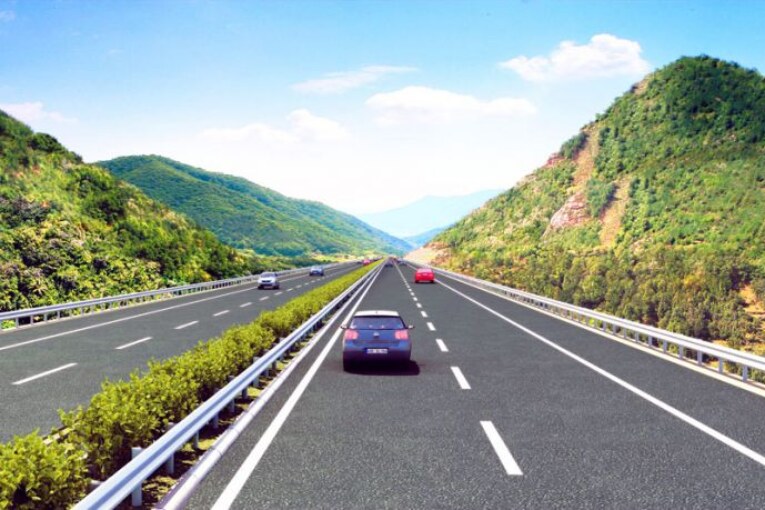
Definition of Geometric Design
- Geometric design of highways deals with the dimensions and layout of visible features of the highway.
- Geometric design fulfills the requirements of the driver and the vehicle, such as comfort, efficiency and safety.
- Proper geometric design will help in the reduction of accidents and their severity.
Goals of Geometric Design
- Maximize the comfort, safety and economy of facilities.
- Provide efficiency in traffic operation.
- Provide maximum safety at reasonable cost.
- Minimize the environmental impacts.
Affects affecting geometric design
- Design speed
- Topography
- Traffic
- Environmental factors
- Economical factors
- Vehicle properties
- Humans (the physical, mental and psychological characteristics of the driver and pedestrians like the reaction time).
Road alignment
- Alignment is an arrangement in a straight line or in correct relative positions.
- The position or the layout of the central line of the highway on the ground is called the alignment.
- Horizontal alignment includes straight and curved paths.
- Vertical alignment includes level and gradients.
Types of alignment
- Horizontal Alignment
- Vertical Alignment
Horizontal Alignment
- Horizontal alignment in road design consists of straight sections of road, known as tangents. Connected by circular horizontal curves.
- It is the design of the road in the horizontal plane.
- Consists of a series of tangents, circular curves and transition curves.
- Should provide safe travel at a uniform design speed.
Vertical Alignment
- Vertical alignment is the longitudinal section.
- Vertical alignment specifies the elevations of points along the roadway.
Carriage way
- The width of pavement way on which vehicles travel is called carriage way.
Road Shoulders
- Shoulders are provided along the road edge to serve as an emergency lane for vehicles.
- As per IRC, the min. width of shoulder should be 2.5m.
Formation width
- Formation width is the top width of the highway embankment or the bottom width of cutting excluding the side drain.
- Formation width = Width of Carr. Way + Width of shoulder.
Right of way
- Right of way is the area of land acquired for the land, along its alignment.
- It is the distance between boundary stones of road on either side of road.
Berm
- The distance between the road toe and inner edge of borrow pit is called Berm.
- It prevents the erosion of embankment soil.
Side drain
- For the drainage of rain water, drains are provided on either side of the road.
- Normally, side drain are required for road in cutting. For road in embankment side drain is not necessary.
Building line
- The distance from the centre line of road on either side, within which construction of building is not permitted is called building line.
Central line
- At the location like bank, hospital, factory, theatre etc. On the road where more people gather disturbance to the traffic will be more.
- The distance from the centre line to such building is called line.
Borrow pits
- The pits dug along the road alignment for using excavated earth in construction of embankment are known as borrow pits.
- Borrow pit should be dug at least 5m from toe of embankment.
- The small portion left undug in a borrow pit to measure the depth of excavation is called deadman.
Kerbs
- The boundaries between pavement and shoulders or footpath are known as kerbs.
Pavement design
- A highway pavement is a structure consisting of superimposed layers of processed materials above the natural soil sub-grade.
- The pavement must provide an acceptable riding quality, adequate skid resistance, favorable light reflecting characteristics, and low noise pollution.
Camber
- Camber or cross slope is the slope provided to the road surface in the transverse direction to drain off rain water from the road surface.
- The rate of camber is usually designated by 1 in n (1 vertical to n horizontal).
Super elevation
- It is the slope across pavement surface and is fully developed in the circular curve.
- Super elevation helps the vehicle to over come the centrifugal force on the curves on pavements.
- The need for super-elevation on road curves, to ensure safety against skidding and over turning with the advent of fast moving traffic.
- In the past, roads were constructed without any regard to super elevation on curves and had generally a cambered section for drainage purposes. It was little realized then that a vehicle moving on a curve had to overcome a centrifugal force to enable it to follow the curved path instead of a straight line, but, in justice to the early designers of roads, it must be said that there was no fast traffic in those days.


